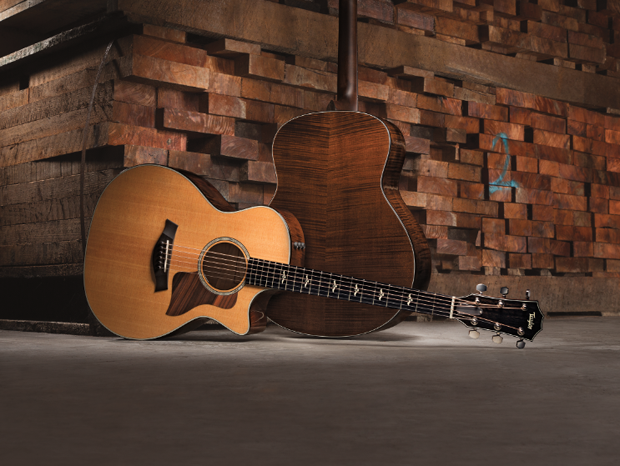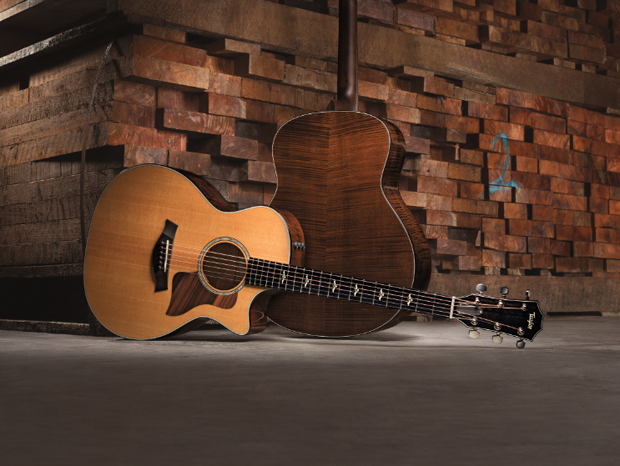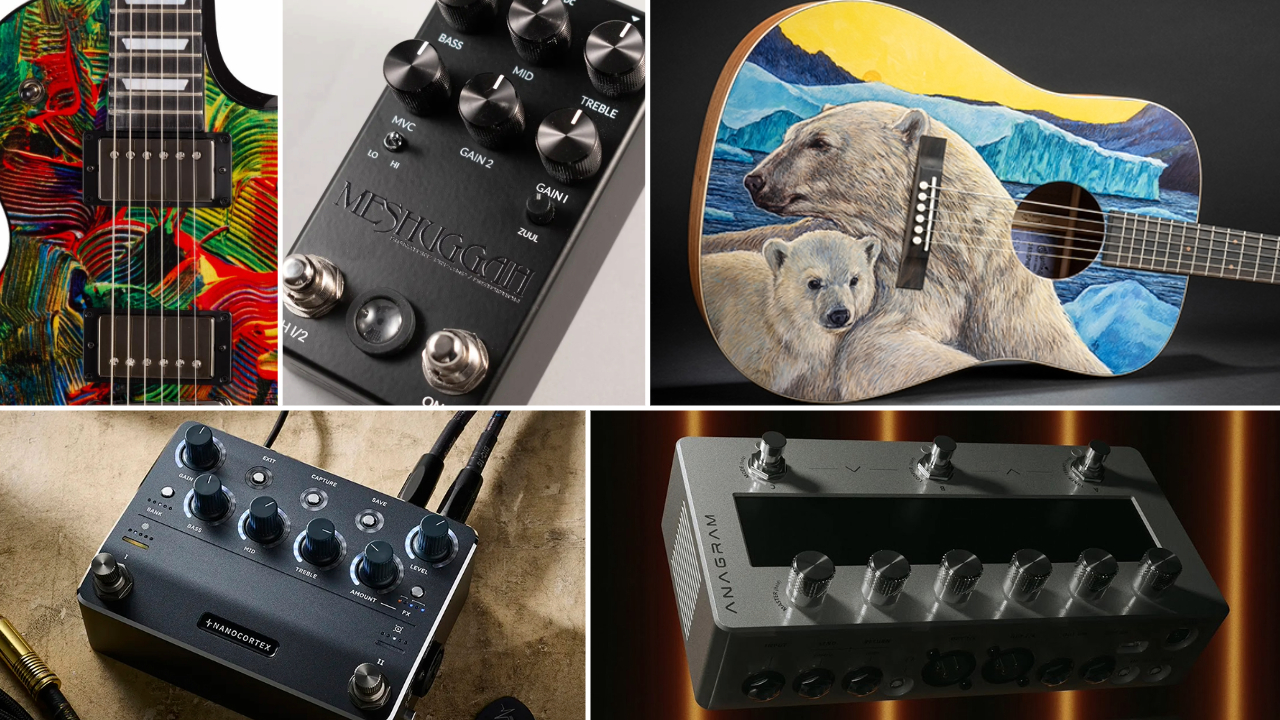NAMM 2015: Taylor Guitars Introduces 600 Series, Maple’s Musical Revival

Taylor Guitars is known for advancing the design of the acoustic guitar, setting a modern course for playability, tone and style.
In 2014, the company unveiled a comprehensive redesign of its flagship rosewood/spruce 800 Series to industry and media accolades, adding to its legacy as one of Taylor’s most popular acoustic guitar offerings.
This year Taylor has applied the same forward-thinking vision to its maple 600 Series, connecting maple’s rich musical history with its stable environmental outlook as an important tonewood of the future.
The new 600 Series guitars elicit the best of the inherent tonal properties of maple. In 2014, Master Builder Andy Powers began to experiment with how far bracing, thickness, finish, and new seasoning processes like torrefaction, a wood roasting method, could enhance maple’s tone profile.
“I wanted playing a maple guitar to be a more gratifying all-around experience,” he says.
“I wanted a tone that was richer, more complex, with longer sustain, without giving up the linearity that I like about maple as a builder.” The result is a warmer, more dynamic, and more responsive instrument with more broadly appealing tonal properties than any maple guitar before it.
As with the 800 Series, Powers reimagined each component of the maple 600s. Notable design innovations include:
Get The Pick Newsletter
All the latest guitar news, interviews, lessons, reviews, deals and more, direct to your inbox!
Customized Wood Thicknesses and Bracing: The top and back thicknesses have been specially gauged for each body shape. Powers also optimized the bracing for each shape. The backs feature new maple-specific bracing profiles and patterns to enhance the responsiveness. As a result, he says, “the backs of these guitars work a lot like an archtop guitar or a violin if you were to delete its soundpost. These braces allow the back to move in a much warmer, stronger way. Players will hear more volume, more projection, and more low-end warmth than a maple guitar they’ve heard in the past.” The back and sides also undergo a special seasoning process to enhance the resonance and stability.
Torrefaction: This carefully controlled, high-temperature roasting process is applied to the Sitka spruce tops to give a new guitar an aged or played-in sound. By aging the wood on a molecular level, torrefaction makes the top warmer and more responsive.
“There’s less resistance in the wood,” Powers explains. “As a result, it allows a more efficient energy transfer from the strings. A new piece of wood has quite a bit of resistance to moving. It’s not used to vibrating at a high frequency like that. An aged or played-in top is just waiting to be set in motion. For a player, it feels like the notes are just falling out of the guitar. As soon as you touch the strings, it takes hardly any effort; it doesn’t feel like you have to pry the sound out.”
Hand-Rubbed Color and Finish: Not only do the new 600s feature the same ultra-thin 3.5-mil clear gloss finish developed for the 800 Series, the maple back and sides boast an additional breakthrough: the inclusion of a proprietary hand-rubbed color application process that adds no additional thickness to the finish. The stain enhances maple’s visual aesthetic without causing any damping in the natural movement of the guitar body, helping to boost the tonal projection and sustain. The new color, “Brown Sugar,” complements the slightly darker color of the spruce tops, a result of the torrefaction process.
Protein Glue: The same protein glues used in the company’s redesigned 800 Series are used in the 600 Series for the critical tone-producing parts, namely for the “power train” components: the bracing and bridge to top joint.
Expression System 2 Pickup: The acoustic voicing enhancements designed for the new 600 Series translate into amplified form with Taylor’s new Expression System 2 (ES2) electronics. The ES2 incorporates three uniquely positioned and individually calibrated pickup sensors. These are installed behind the saddle, through the bridge, and effectively capture more of each guitar’s dynamic properties and acoustic energy.
First World Tonewood: Maple is a tonewood that can be harvested specifically for instruments here in the United States, a project that longtime tonewood partner Steve McMinn of Pacific Rim Tonewoods is undertaking. Given its geographical location, maple grows in politically and economically stable environments and is considered to be “conflict free” and well-managed. This is important to Taylor co- founder, Bob Taylor.
“Now and in the future, maple forests will be among the healthiest and most sustainable sources of instrument wood,” he says. “This is a species from our own backyard that can be formed into world-class instruments for generations to come. So, it is an important wood for us as a forward-thinking instrument manufacturer. This redesign is our way of showing players how great a maple and spruce instrument can look and sound.”
The newly redesigned 600 Series is available in the 614ce (Grand Auditorium), 616ce (Grand Symphony), 618ce (Grand Orchestra) and 656ce (12-String Grand Symphony).
For more information, visit taylorguitars.com/news.

Since 1980, Guitar World has been the ultimate resource for guitarists. Whether you want to learn the techniques employed by your guitar heroes, read about their latest projects or simply need to know which guitar is the right one to buy, Guitar World is the place to look.
“Among the most sought-after of all rhythm guitars… a power and projection unsurpassed by any other archtop”: Stromberg has made a long-awaited comeback, and we got our hands on its new Master 400 – a holy grail archtop with a price to match
The heaviest acoustic guitar ever made? Two budding builders craft an acoustic entirely from concrete because they “thought the idea was really funny”








![[from left] George Harrison with his Gretsch Country Gentleman, Norman Harris of Norman's Rare Guitars holds a gold-top Les Paul, John Fogerty with his legendary 1969 Rickenbacker](https://cdn.mos.cms.futurecdn.net/TuH3nuhn9etqjdn5sy4ntW.jpg)


